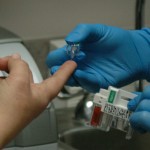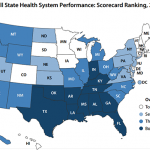Implementing a Standardized Operational Deployment System in a Healthcare Setting

Image Source: seb_ra | Getty Images via Canva
The case below explores the implementation of a standardized Operational Deployment System (ODS) at Corewell Health West, a healthcare system in West Michigan. The goal of the system was to align operational processes and improve efficiency across physician and non-physician stakeholders. By implementing ODS, the organization aimed to enhance quality, increase patient satisfaction, optimize operational efficiency, and reduce costs while ensuring staff and physician satisfaction.
Background
Corewell Health West is a complex large healthcare system in West Michigan with 31,000 employees (4600 providers). Due to its large footprint in West Michigan, it aims for transformation to improve quality, increase patient satisfaction, deliver operational efficiency, and reduce costs. Foundational to all this work is staff and physician satisfaction. There was a need for shared language to communicate critical goals in a way that allowed us to be efficient while creating a standard approach to work. To move such a large team in one coordinated direction, Corewell Health needed to engage in focused efforts in a way that was respectful to its teams and leaders.
The ODS was designed to help leaders clarify what is most important and align the right resources to meet the goals set. This system, composed of best practices from individual project management and process improvement methodologies, was implemented to provide clarity, cascade goals appropriately, and help prevent employee burnout by creating a system of intentional alignment.
ODS Implementation Process
Implementing the Operational Deployment System begins with an annual goal-setting process led by the executive team and subject matter experts in the areas of cost, quality, people, and value. There is then a multi-week process of cascading these goals from the executive team through various levels of physician and operational leadership to front-line staff. Subsequent conversations called “catch-ball” follow in which each level of leadership discusses and eventually finalizes goals in each of the four categories. This process culminates with executive sign-off, confirming the roll-up of goals at each level to ultimately achieve the system goals. These goals are captured in a document called an Operational A3 (see sample). Each level of leadership, starting at the director level, has an OA3 that outlines the annual goal in each category and provides space for monthly data updates and explanations.
The manager level of leadership does not have an OA3 but instead utilizes a reporting tool called a gate chart (see sample). Each goal has a separate gate chart featuring a leading metric (the metric that aligns with the director OA3), a lagging metric, and specific tactics and timelines for impacting performance.
Read More >> Improving Performance Measurement in Supply Chains
Reporting and Communication
Following this goal-setting process and after populating the OA3 and gate charts, weekly report-outs begin each week focused on one of the four priority areas. Report-outs take place in a virtual meeting with managers reviewing the gate chart performance with front-line staff. This is followed by managers reporting their gate chart update to directors, who then provide a similar report to Physician and Operations Vice Presidents (VPs), and so on. Each of these report-outs follows the TAPE methodology, which stands for Target (what was the goal), Actual (what is the actual performance metric), and Please Explain (what were the actions or factors that contributed to that month’s performance).
Change Management
The ODS process inherently supports change management surrounding efforts to meet annual goals by engaging the front-line staff and every level of physician and operational leadership in goal setting, action plan development, and performance tracking. A key component of successful implementation is training leaders and teams in the ODS process. Training sessions for all levels of leaders included a review of the principles of ODS, the OA3 and gate chart templates, and the TAPE reporting format, and included time for discussion and questions. Implementing operational goals, management for daily improvement and cascade reporting, and communication were key areas of discussion during these training sessions.
Stakeholder Experience
To gauge the stakeholder experience, VPs and Director-level physician and operational leaders were surveyed about their experience with ODS. Among the 54 respondents, 61% agreed or strongly agreed that ODS has allowed them and their upline to focus on key areas for operational success. Moreover, 69% agreed or strongly agreed that ODS effectively aligns operational tactics with system strategy.
Lessons Learned and Next Steps
The ODS at Corewell Health initially faced challenges as leaders at all levels adjusted to this new form of tracking and presenting metrics. As the process matured, these perceived notions morphed into support, engagement, and eagerness to introduce new ideas.
Survey results indicate that the leaders perceive improved focus in key operational areas due to ODS. The system has been adopted outside of service lines as well. Hospital medical staff leadership embraces value in aligned goals and now reports on the executive dashboard. Independent physicians are looking at ways to use ODS to improve their private practice structure and function.
Read More >> What Is Reverse Logistics and How Can It Affect Performance?
Conclusion
Implementing an Operational Deployment System at Corewell Health has been thought-provoking, enlightening, and rewarding. Previously top-down leadership in this space has moved to shared decision-making. As ODS progresses through year three, physician and operations leaders will build on lessons learned and broaden skills to make ODS an even richer process and a model for other organizations to follow.
********
Editor’s Note: The authors are Aiesha Ahmed MD, MBA (VP, Population Health, and Chief of Neuroscience); Rashelle Ludolph (Operations Director, Medical Specialty Services); Cheryl Wolfe MD, MBA (VP, Chief of Women’s Health), and Sonja Beute (Director of Strategic & Operational Deployment).
This article has been updated as of September 17, 2024.

Tags: Corewell Health West, Healthcare performance, Operational Deployment System, operational processes





